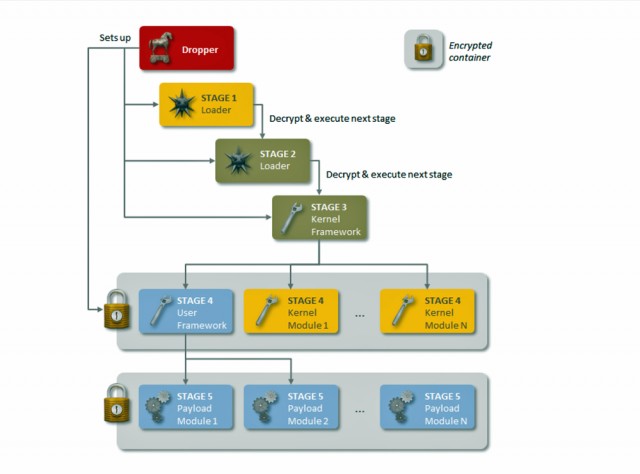
Researchers have unearthed highly advanced malware they believe was developed by a wealthy nation-state to spy on a wide range of international targets in diverse industries, including hospitality, energy, airline, and research.
Backdoor Regin, as researchers at security firm Symantec are referring to the trojan, bears some resemblance to previously discovered state-sponsored malware, including the espionage trojans known as Flame and Duqu, as well as Stuxnet, the computer worm and trojan that was programmed to disrupt Iran's nuclear program. Regin likely required months or years to be completed and contains dozens of individual modules that allowed its operators to tailor the malware to individual targets.
To remain stealthy, the malware is organized into five stages, each of which is encrypted except for the first one. Executing the first stage triggers a domino chain in which the second stage is decrypted and executed, and that in turn decrypts the third stage, and so on. Analyzing and understanding the malware requires researchers to acquire all five stages. Regin contains dozens of payloads, including code for capturing screenshots, seizing control of an infected computer's mouse, stealing passwords, monitoring network traffic, and recovering deleted files. Other modules appear to be tailored to specific targets. One such payload included code for monitoring the traffic of a Microsoft IIS server. Another sniffed the traffic of mobile telephone base station controllers.
Read 4 remaining paragraphs | Comments